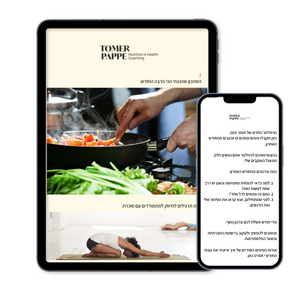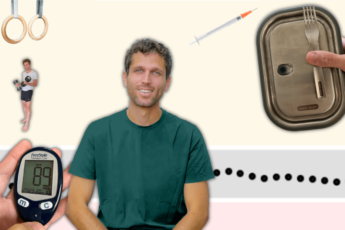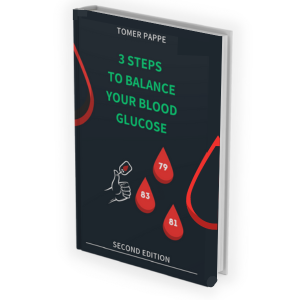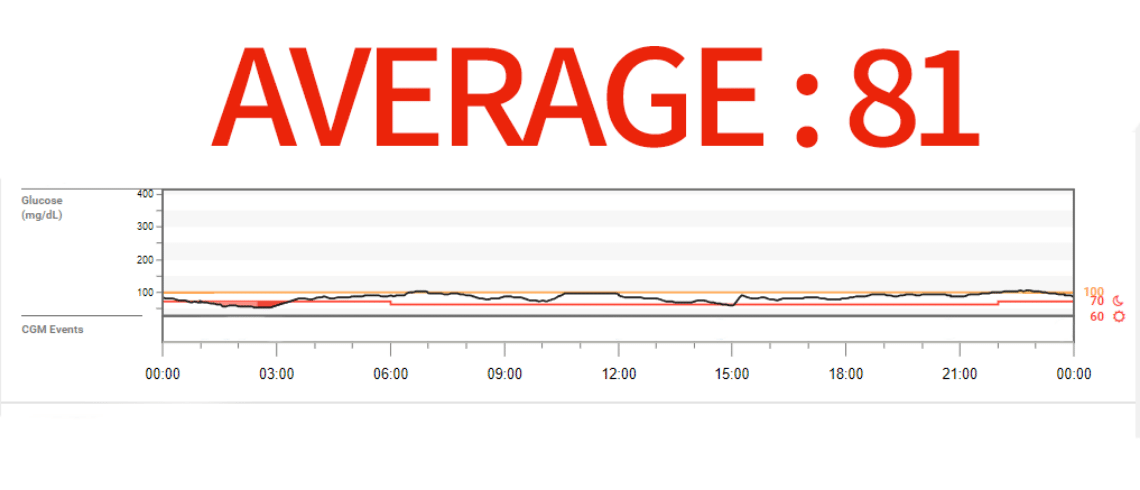
Balanced diabetes – the ketogenic diet, carbohydrate restriction and normal blood sugar
Anyone who knows me and follows the content I upload knows that I do not use the word diet. The word diet has connotations of trends such as “weight loss” diets that represent a temporary change, as opposed to a real change in lifestyle that comes from a deeper place. In my eyes, an extreme fasting diet could be dangerous for most people, except for dangerous and urgent situations of various kinds, in which it is worthwhile to consider an extreme change for a predetermined time, such as an intermittent fasting . Even the trend of “ketogenic diet” may be misleading in its name. Ketones are produced in the body. When someone asks “is this a ketogenic food?” Or uploading a photo in one of the groups titled “I made an amazing ketogenic recipe” is simply not true. We don’t eat ketones. This is a certain metabolic state that occurs when our body assumes that we are in a certain state of starvation. As a response, the body chooses to rely on fuel that is more available and more durable over time. Weight is not necessarily a measure of health either. It is true that gaining muscle and maintaining a lean body is equal to health and longevity, but when we approach matching different foods to different situations – losing weight should never be our goal in my eyes. This is the end result that usually comes naturally after treating the root of the problem that throws the body out of balance. Another important point is that some people who look full can be the healthiest people in the world. The more important question I ask myself is – what type of fat is on them and in which parts of the body? (Intra-abdominal fat, in the muscle area or fat in the organs). Our attitude towards food, way of eating, or way of eating, whatever you choose to call it – is a way of life that we must consciously choose. This is a real change in which we choose every day anew to be the healthiest, clearest, most fertile, strong, vital and to be given the opportunity to live longer with dignity independent of the health care system. As they say “the best version of ourselves”. These are the principles by which I live every day and in this article I will try to detail them and simplify the factors thanks to which I was able to balance my blood sugar.
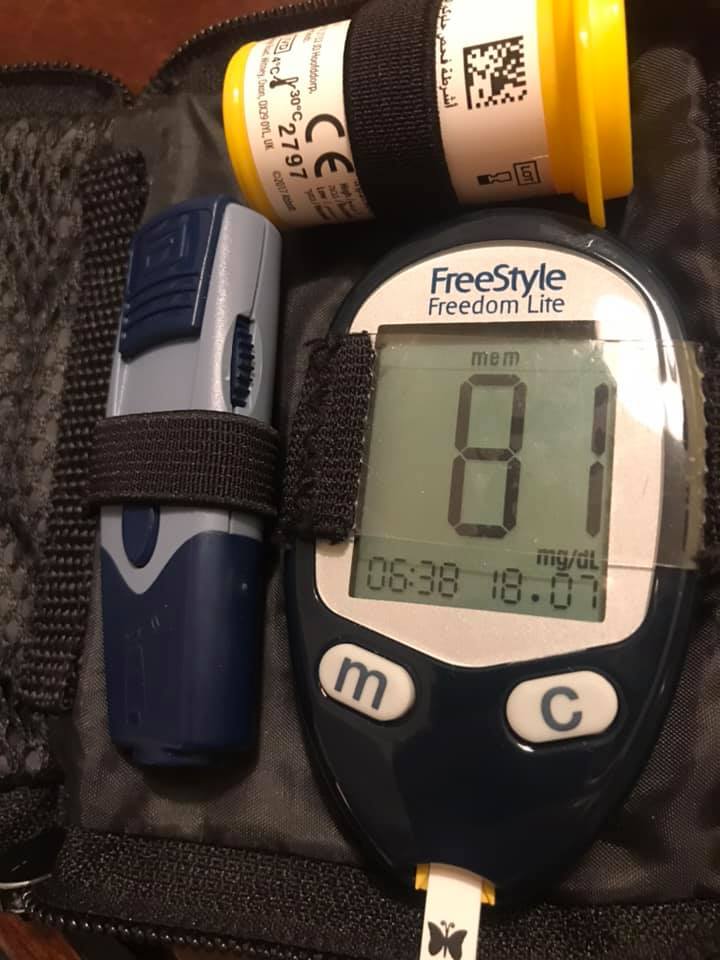
Table of contents:
Ketogenic diet and blood sugar levels of a healthy person
The main image of the article shows a day of blood sugar monitoring from my continuous glucose meter. This is how I live 24/7 with type 1 diabetes with balanced blood sugar, just as the body always strives for in homeostasis (the state in which the physical and chemical conditions within the organism are maintained at a stable level suitable for its optimal activity, regardless of what is happening in the external environment). The body always strives for homeostasis. In situations where there is a demand for available and fast energy, we will slightly exceed the limits of homeostasis in order to complete the same task, but very quickly the body’s systems will do everything they can to return to a balanced state. If the body does not return to a balanced state after the event that took it out of homeostasis and the phenomenon repeats itself, problems begin.
I have been living with the sugar values of a healthy person since I changed my attitude towards food several years ago. This way I live in complete balance and even though I have diabetes my blood sugar remains balanced before eating, during eating and after eating. This is not a diet or a passing nutritional trend. The legendary Dr. Bernstein was the one who discovered that limiting carbohydrates and eating animal foods are the true and only solution to diabetes and the prevention of diabetes complications. His discovery stands the test of time even today more than 75 years after that discovery. Dr. Bernstein offered for the first time solutions for diabetes – arranged and detailed in depth as a sort of ‘guide to balance’ in his book “The Diabetes Solution”. The approach that Dr. Bernstein promotes, he did not call it by a name that commercializes it, such as “ketogenic diet”/”vegan diet”/”the _ diet.” You can fill in the gaps according to the trend that comes to your mind. I think this diet can be called a diet for diabetics.
The true meaning behind the phrase ketogenic diet
You will probably never hear me use that phrase or recommend a ketogenic diet. It is true that this is a diet that has been proven to be beneficial and good and I greatly respect the benefits of this approach, but as I said a ketone is a molecule that is the end product of a long metabolic process. This diet was created like other diets mainly so that it would be possible to simplify complex metabolic processes, commercialize products and sell those products to us under the title “ketogenic”.
Therefore, in my eyes, there is usually no special advantage in measuring ketones except for research purposes. You can take as an example a person who eats a large bowl of carb-laden pasta for dinner and then goes into a 16-hour fast until lunch the next day. If we measure his blood ketone level before lunch, we may find that his blood ketone level is high. The body reacts this way in light of certain hunger even if the starvation is temporary. No need to look for ketogenic foods. My advice is to always eat to your heart’s content, never force yourself to fast and never force yourself to eat.
Trends like ketogenic nutrition have always been and always will be, but my goal is to help everyone see beyond the current trend and ask themselves what is right for them. When we want to balance the sugar or deal with a certain limitation, ketones are not so relevant for us. Reaching a value between 70-100 on the sugar meter throughout the day is the ultimate goal in treating diabetes. To achieve this goal it is not necessary to call our diet names.
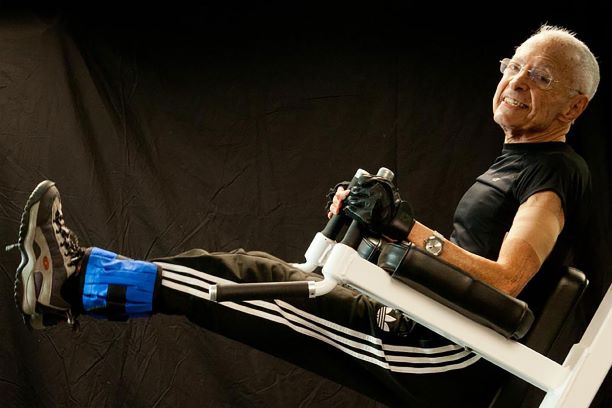
Dr. Bernstein and Dr. Jocelyn
Dr. Richard K. Bernstein and his predecessor Dr. Elliot P. Jocelyn was a pioneer in the field of diabetes treatment and one could say – in the field of curing diabetes. They and their life’s work are proof that limiting carbohydrates in food is unavoidable for those who want to live a fruitful and long life with type 1 or type 2 diabetes. Today, apparently a certain restriction in the consumption of carbohydrates from the diet is also relevant for the entire population, but that is already the subject of a separate post. The intention here is not to completely avoid carbohydrates, but to limit them to a level where we do not experience an increase in blood sugar levels after eating them.
Dr. Bernstein is a Jewish doctor from New York who has been living with type 1 diabetes for over 75 years. At the age of 88, he still receives patients and trains every day with a high and impressive intensity compared to his peers, it should be noted. He started this amazing journey once he discovered that limiting carbohydrates was the key to controlling blood sugar levels. To the same extent, diabetes could be called “carbohydrate intolerance”. Somewhere in his 30s, his doctors predicted to him that he would not live much beyond the age of 30. Over time, he also cured serious diabetes complications from which he suffered from a relatively young age. He took his first steps in his personal research in the dark days of diabetes before the invention of home glucose meters and long before the invention of the continuous glucose meter that is accessible today to all patients with type 1 diabetes.
The daily challenges in dealing with diabetes
Any insulin-dependent diabetic will attest to how challenging it is to control blood sugar with self-administration of insulin. When you eat meals high in carbohydrates, the sugar rampages throughout the day (and night), which is also called the “sugar roller coaster”. Each measurement of the blood sugar level is a surprise in itself and the value appearing on the display of the blood sugar meter is never expected.
When a person without diabetes eats a slice of bread, the body immediately reacts to the sharp increase in blood sugar with a rapid release of insulin from the pancreas according to the amount of incoming sugar. This way the insulin is secreted until the concentration of sugar in the cell and in the blood returns to a normal level. When an insulin-dependent diabetic eats a slice of bread that spikes the blood sugar level within seconds, he must time the insulin injection against the amount of carbohydrates in the slice and that’s even before I talked about other factors that affect the effectiveness of insulin such as: time of day, stress, physical exertion, heat and cold and other factors that affect on the level of insulin sensitivity. Beyond that – not every injection is similar to its predecessors and there are leaks from the syringe or a certain percentage of the injected insulin that is neutralized by the immune system at the time of injection.
You should also take into account the situation of weight gain and inject larger amounts of insulin throughout the day. In the opposite situation of weight loss, we must reduce the amounts of insulin throughout the day.
In short – it is almost impossible to time an insulin injection against a fast carbohydrate meal perfectly. That’s why the Bernstein promoter’s approach is simply a genius solution to diabetes – the genius in simplicity.

I know how to testify today how precious are the moments when the blood sugar is balanced over time. The dives and the other physical sensations that accompany me when the blood sugar balance is maintained for a long time are really worth more than anything else I can think of. I remember after I changed my way of eating, I said to myself “How come no one ever told me about this? My body can be a fighter jet with the right conditions. I am able to sleep fewer hours at night and be more focused throughout the day without drops in concentration or energy.” In all my years when I went from one diabetes doctor to another when the treatment offered to me was something along the lines of “eat whatever you want and just remember to inject insulin” – a problematic approach that only intensifies the roller coaster of blood sugar and eventually brings many diabetics to a situation where they have to suffer from life-threatening diabetes complications. When I changed what I eat, I noticed that I was able to stay focused for 12 hours or more throughout the day, without slumps after lunch or in the middle of the morning or towards the evening. Another nice bonus was the physical fitness that improved without changing my workouts which really made me feel like a new person. It is important to note that there are certain adjustments for training when relying on fat and animal protein for those who are dependent on insulin and must work in full coordination with the attending physician using trial and error.
Eating times
The only and probably the most important restriction for managing blood sugar throughout the second half of the day and during sleep is to avoid eating 4 hours before bed. Food that is digested before going to sleep will continue to be digested at night and the following morning we may wake up with high sugar or experience a sudden jump in sugar in the first hours after waking up. This jump occurs because of food that was not fully digested the night before and stress hormones that are naturally released when waking up in the morning. Dr. Bernstein called this phenomenon the Dawn Phenomenon. In any nutritional approach, it is recommended to maintain the principle of consuming most of the nutrients at the beginning of the day until noon. Later in the day, until we go to bed, it is recommended to gradually decrease the concentration and amounts of food. For example:
Carbohydrate restriction and insulin timing
In diabetes as in life, timing is everything. A 10-minute change in injection time can mean the difference between hypoglycemia and normal blood sugar for a diabetic. That is why it is mandatory for everyone who is dealing with diabetes to know their body. Every diabetic will react differently to insulin. On one type of diabetes the insulin will have an effect within 10 minutes and on another type of diabetes the same amount of insulin will have an effect only after 50 minutes. It is a trial and error that never ends. Trial and error is the basic principle behind proper management of balanced diabetes. No doctor can do this for you and it is impossible to determine dosages and timing according to predetermined formulas and measurements.
When I started limiting carbs in all their forms I got my life back. Since then I only improve and upgrade what I eat. Naturally, this change led me to a natural way of eating that is based on quality and unprocessed animal products. There is a game of fat and protein ratios here, but overall those who eat from head to tail from quality sources such as local grazing cattle will receive correct ratios of nutrients that the body needs. These are relationships that are found naturally in all cattle organs, including internal organs, bone marrow and bones. The decision to add fruits, vegetables, nuts and dairy products is an individual decision that depends very much on each person’s reactions to these foods.
Choosing quality food sources from animals
When I choose different sources of food for the main part of my meals – animal food, I look for grazing cattle, also called “grass fed”. My recommendation is to eat “from head to tail” so there is no need to worry about eating enough protein or fat. I have also not taken supplements for years because I get a full spectrum of nutrients from all parts of the beef including internal organs. The animal’s internal organs are the most nutritious food in nature and are also called “nature’s multivitamin”. This is true for all internal parts including marrow which is loaded with essential nutrients.

I’m not afraid of fat and I use a lot of ground meat with good fat percentages. As of today in the State of Israel it is not always easy to obtain quality animal sources other than cattle. There are some good sources such as duck farms that raise ducks without antibiotics and free-range chicken farms, which are not bad at all, but this is less common in Israel, unfortunately. Even in these free-range farms, I think it’s worth questioning the breeders regarding the nutrition, medications and the way the chicken is raised. A good source would be one that does not feed the animal soy and grains to begin with. This is true for all types of meat: beef, poultry and pork. One of the ways I usually prepare my meat is to bake it in the oven on baking paper and I keep the rendered fat in a jar for future use as cooking oil. The industrial chicken is quite a contaminated food and I avoid such chicken. Industrial grain-fed beef will accumulate less toxins than chicken, so I prefer to consume beef.
Another great source of animal food is everything that comes to us from the sea such as fish and seafood. Finding a good source for fish can be quite a challenge. In Israel as in the rest of the world, the sea is polluted and contaminates all the creatures living in it unfortunately. From time to time I include fish in my meals when I find a good source but it doesn’t read often because of the presence of plastic and other polluted materials in the body of the fish in our seas. When I eat fish I try to make it as wild as possible and preferably deep-sea fish. Of course, one must exercise discretion and thoroughly research the owner of the local fish store about the source of the fish. All marine creatures are an amazing source of essential nutrients if they are not polluted. I eat them raw as sashimi or baked in the oven.

It’s not expensive?
Ground meat in the supermarket and ground meat in general is an excellent and cheap solution for people who want to successfully transition to a protein-rich diet. Many people have the misconception that this is an expensive diet, but I know quite a few people who have achieved impressive results with ground meat from the supermarket, which can cost as much as NIS 20 per kilo. For those who are dealing with diabetes, ground meat from the supermarket will give the same effect of easing the sugar balance and improving the indicators just like any other meat.
In conclusion
The transition to the way of eating based on carbohydrate restriction has changed the lives of many diabetics and saved them from fatal diabetes complications. The foundation stones for this approach were laid by giants such as Dr. Joselin and Dr. Bernstein. Concentration that improves throughout the day, energies, a good mood that is not subject to jumps and falls, physical strength and improvement of physical abilities – all these are worth any difficulty that arises during the period of transition and adaptation to the new way of eating. Over time, like any change in the way of life, I began to realize how many things I thought I depended on are not at all necessary for me on a daily basis. Substances such as caffeine, cocoa and other indulgences that most people in the modern world use as a “reward” for effort in the style: “I’ll just finish this chore and then I can rest and drink coffee in peace on the balcony.” This method of reward has led us to a culture where we hang our happiness, our creations and all our desires on food. In my eyes, this attitude causes disruption of the order of priorities in life. Instead of deriving satisfaction from improvement in spiritual areas or in the areas of interest that really fulfill us, we have accustomed ourselves to live for satisfaction from external stimuli. Those stimuli satisfy us only for the second we consume them but in the long run they are usually destructive. I managed to detach myself from all of these, which pretty much eliminated diabetes as a disease for me, and since then I’ve been on “automatic pilot”. This is a process that required time and perseverance and it is not a change that happened in one day. When I am asked about the change I made, I usually suggest to the questioners to give them a chance of one month and after a month to decide whether to continue or not. I also started from one month and haven’t stopped since.
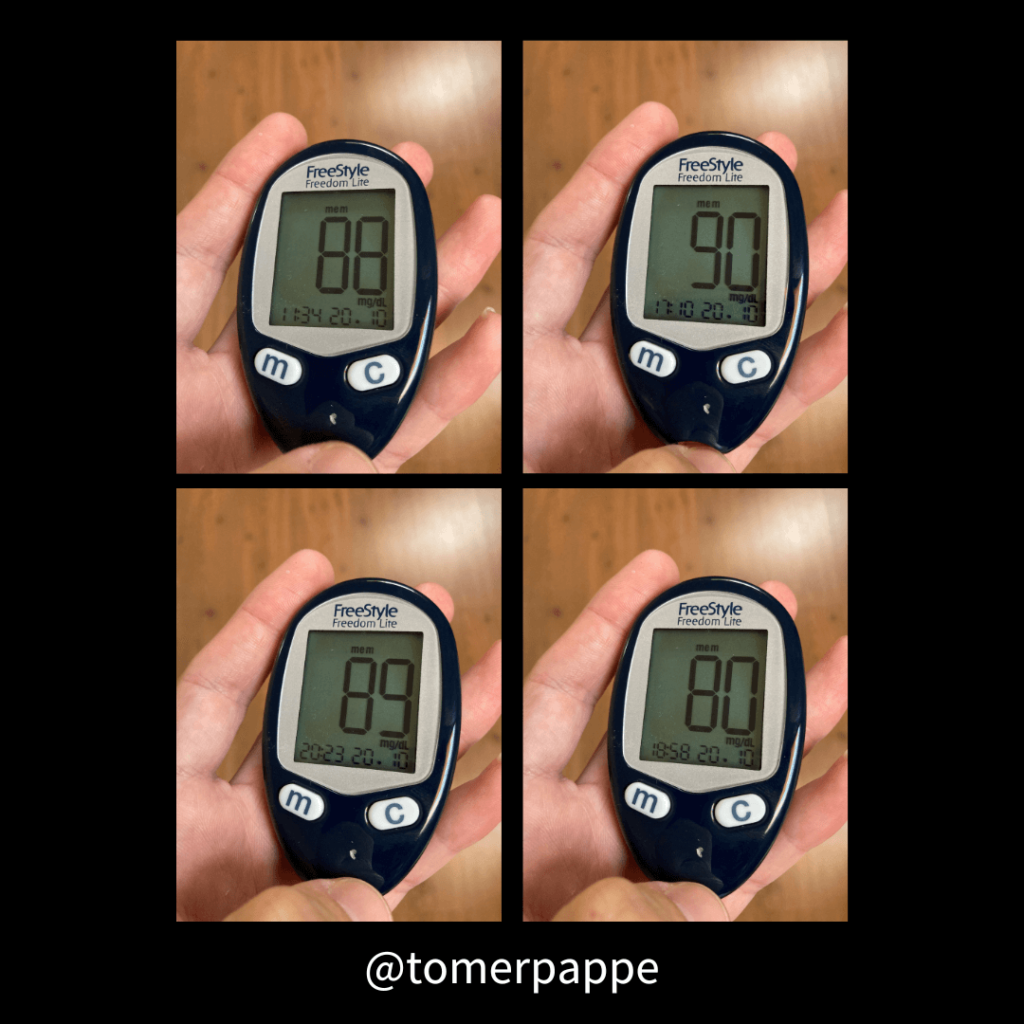
*The information on this website is not intended to be a substitute for professional medical advice, diagnosis or treatment. The said information is intended for informational purposes only and stems from personal experience. The text is not intended to diagnose, treat or cure any specific disease or medical condition. Reviews and testimonials about nutrition, training and various health approaches represent individual experiences and what is stated on the site does not guarantee any results for your specific situation. Any choice of a specific way of eating or medical treatment according to a given situation should be made under the guidance of professionals qualified to do so.


